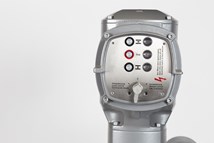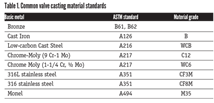Dow, X-energy to Drive Emissions Reductions Through Advanced Modular Nuclear Power
Dow and X-energy collaborate on intent to provide process heat and power at one of Dow's U.S. Gulf Coast facilities by ~2030
Dow and X-energy will collaborate with the intent to deploy X-energy's Xe-100 high-temperature gas reactor technology at one of Dow's U.S. Gulf Coast sites – which is expected to be operational by approximately 2030. The Xe-100 reactor plant would provide cost-competitive, carbon-free process heat and power to the Dow facility. Dow also intends to take a minority equity stake in X-energy, working with the company to deploy small modular nuclear technology.
The has recognized that advanced small modular nuclear reactor technology is a key part of the Department's goal to develop safe, clean and affordable nuclear power options. In 2020, X-energy was selected by the U.S. Department of Energy's Advanced Reactor Demonstration Program to deliver a four-unit Xe-100 plant in Washington state, which will make it among the first operational grid-scale advanced reactor plants in North America.
Small modular nuclear represents a key technology to enable energy-intensive industries to decarbonize. And this announcement marks an additional step in Dow's efforts to deliver 30% reduction in scope 1 and 2 carbon emissions since 2005 by 2030, on its path to achieving carbon neutrality by 2050. In 2021, Dow plans to build the world's first net-zero (scope 1 and 2 emissions) carbon emissions integrated ethylene cracker and derivatives site in Fort Saskatchewan, Alberta.
Dow's " ESG report provides more detail on the company's continued efforts to reduce carbon emissions around the world.
Photo Credit: X-energy & Dow Corporation
RELATED CONTENT
-
Misconceptions Regarding Control and Isolation Valve Standards
All on/off isolation valve standards are not created equal and cannot be applied unilaterally to all valves.
-
Intermediate Class Valves, the Forgotten Classification
These days, piping designers use automated systems that default to standard classifications such as pressure classes of 150 to 2500 for valves and associated equipment.
-
DBB and DIB: Which is which?
The term “double block-and-bleed (DBB)” carries a lot of misconception when it’s used to describe valve functionality.







 Unloading large gate valve.jpg;maxWidth=214)